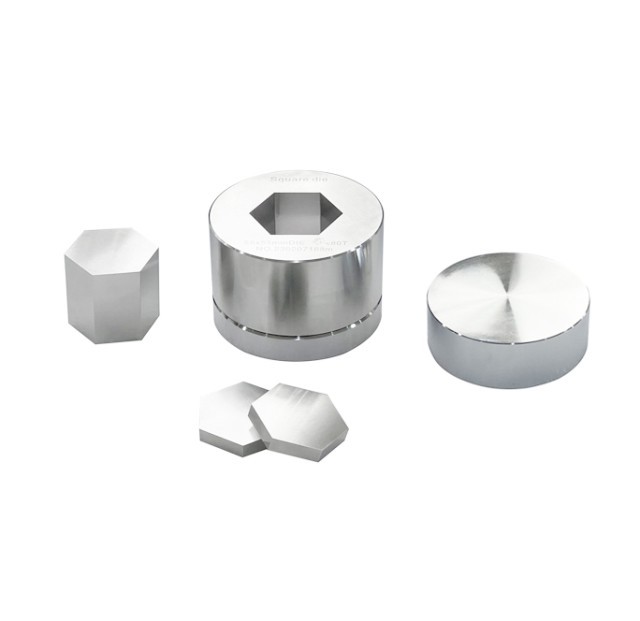
Laboratory Press Molds
Lab Polygon Press Mold
Item Number : PMPD
Price varies based on specs and customizations
- Sample shape
- Polygonal, e.g., square, hexagonal, etc.
- Sample size
- 5x5, 10x10, 15x15, 20x20 mm (Customizable)
- Die material
- Alloy tool steel: Cr12MoV
Shipping:
Contact us to get shipping details Enjoy On-time Dispatch Guarantee.
Why Choose Us
Reliable PartnerEasy ordering process, quality products, and dedicated support for your business success.
Polygon Press Mold: Precision Compaction for Diverse Material Shapes
KINTEK's Polygon Press Mold is a robust and versatile tool engineered for compacting metal powders and other materials into various polygonal shapes with high precision. Whether you need round, square, hexagonal, or custom-shaped pellets, this mold, when used with a compatible lab press (offering high pressure and optional electric heating capabilities), delivers samples with exact dimensions. This precision is crucial for material testing, research, and specialized manufacturing processes, ensuring uniformity and stability in your final product.
Explore the Details: Components & Design
Our Polygon Press Mold is built for durability, precision, and ease of use. Examine its high-quality components and thoughtful design:
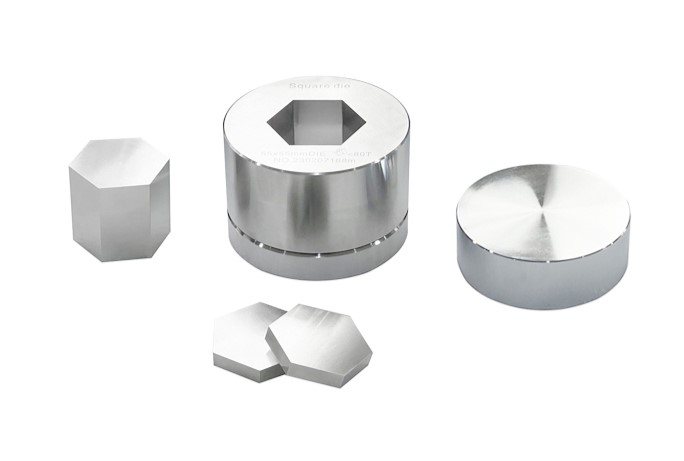
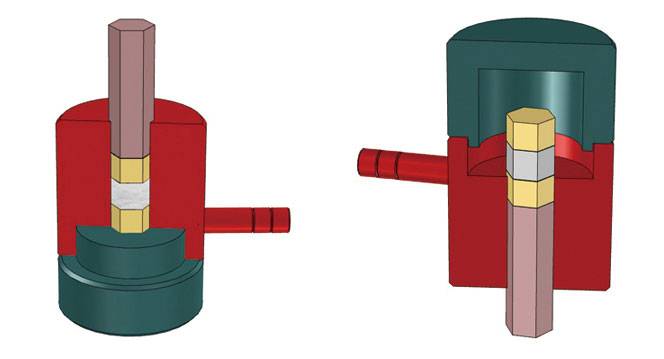
Key Features & Benefits: Enhance Your Processing
The Polygon Press Mold offers significant advantages to improve your productivity, sample quality, and cost-efficiency:
- Versatile Shaping Capabilities: Accommodates molds of various geometries (e.g., round, square, hexagonal, and other polygons) to produce pellets with precise dimensions tailored to diverse applications.
- Customizable Pressing Tonnages: Designed to work with presses allowing adjustable tonnages, ensuring optimal pressure is applied for your specific part sizes. This achieves the desired shape and density, enhancing efficiency by potentially reducing the need for multiple molds.
- Dual Pressure Application for Superior Uniformity: Engineered for use in presses that apply pressure from both top and bottom, resulting in more stable and uniformly compacted samples, minimizing defects and improving consistency.
- Cost-Effective, Simplified Mold Design: The mold's design is inherently simpler and more economical for many applications compared to those used in processes like M.I.M, plastic injection, or die casting, reducing initial investment and maintenance costs.
- Highly Repeatable Process: When used with a calibrated press, the mold facilitates a process that delivers consistent results. This repeatability is crucial for reliable material testing and efficient mass production, ensuring each piece meets exact specifications.
- Broad Material Compatibility: Effectively shapes a wide range of materials, including various metal powders, ceramics, plastics, and rubber, making it a versatile tool for different industries and research needs.
- Reduced Waste & Labor Costs: Enables an efficient molding process that can minimize material waste and reduce labor, contributing to lower operational costs and higher profitability, especially in larger-scale productions.
Wide Range of Applications
The Polygon Press Mold is indispensable across various sectors where precise material shaping and compaction are critical:
- Material Testing: Create uniform test samples for accurately analyzing material properties, performance, and behavior during manufacturing or research.
- Industrial Component Manufacturing: Produce components with specific polygonal shapes and sizes, ensuring consistency and stability for diverse industrial applications.
- Specialized Production (e.g., Spark Plugs): Ideal for processes like cold isostatic pressing of items such as spark plugs or other components requiring long aspect ratio pellets or unique geometries.
- Research and Development (R&D): Experiment with novel material compositions and shapes under controlled pressing conditions, facilitating innovation.
- Quality Control: Maintain high product quality standards by ensuring repeatable and precise compaction processes for consistent output.
Understanding the Operation: Principle & Steps
The polygon press mold is designed to be used in a hydraulic press. It typically operates by applying pressure from both above and below the material contained within a die cavity. This cavity matches the desired outer shape of the part (e.g., pentagonal, hexagonal). Upper and lower punches, connected to the press cylinders, compact the material. This dual-action pressing ensures even compaction, dimensional accuracy, and stability. Polygonal molds can be made into various special shapes, such as triangles, hexagons, and semicircles, to meet specific requirements.
Simple Operation Steps:
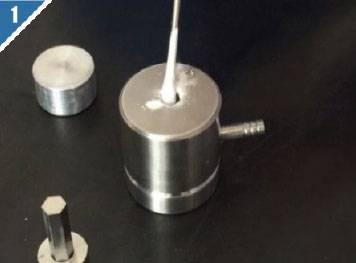
1. Assemble the die parts according to the operation diagram and carefully place your sample material into the die cavity.
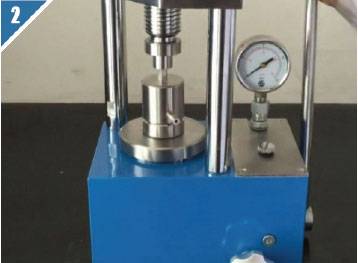
2. Position the assembled die in the center of your hydraulic press and apply pressure up to the required level for your material and desired density.
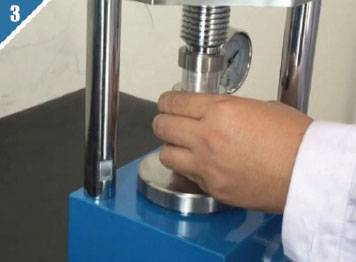
3. After pressing, configure the die for release (as per the diagram) and carefully eject the compacted sample, often using a screw rod or the press mechanism.
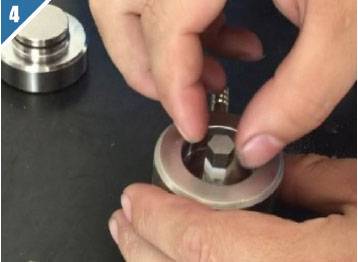
4. Remove the die assembly from the hydraulic press and gently retrieve your finished, compacted sample.
Technical Specifications
| Instrument model | PMPD |
|---|---|
| Sample shape |  (Polygonal, e.g., square, hexagonal, etc.) (Polygonal, e.g., square, hexagonal, etc.) |
| Die material | Alloy tool steel: Cr12MoV |
| Indenter hardness | HRC60-HRC62 |
| Sample size (Examples, Customizable) | 5x5, 10x10, 15x15, 20x20 mm (M) (Other sizes available upon request) |
| Cavity depth | 40mm (N) (Customizable) |
| Dimensions (Overall Mold) | Φ53*120mm (L*H) (May vary based on sample size) |
| Weight (Approximate) | 1.4Kg (May vary based on size) |
| Diagram of hydraulic powder press size compatibility | 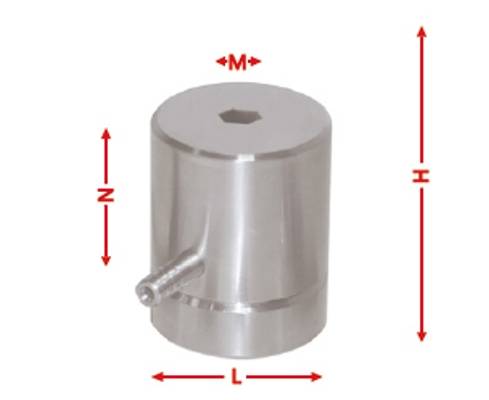 |
Partner with KINTEK for Your Lab Press Needs
KINTEK specializes in providing high-quality lab press machines (including automatic lab presses, lab isostatic presses, and heated lab presses) and precision accessories like the Polygon Press Mold. We are dedicated to serving diverse laboratory and industrial needs by delivering solutions that enhance research, development, and manufacturing processes.
With the KINTEK Polygon Press Mold, you can achieve unparalleled precision, uniformity, and efficiency in your material compaction tasks. It's designed to be a valuable, long-lasting asset, helping you innovate and maintain the highest standards in your work.
Ready to optimize your sample preparation or component manufacturing with precise polygonal shapes? Contact KINTEK today to discuss your specific requirements for the Polygon Press Mold, request a custom quote, or learn more about our comprehensive range of lab press solutions. Please fill out the contact form on this page, and our specialists will get in touch with you shortly to assist.
Full range of types of laboratory press molds
We have a full range of molds for you to choose from, and the molds fit the body perfectly.
If you need molds with special shapes, we can also customize them for you.
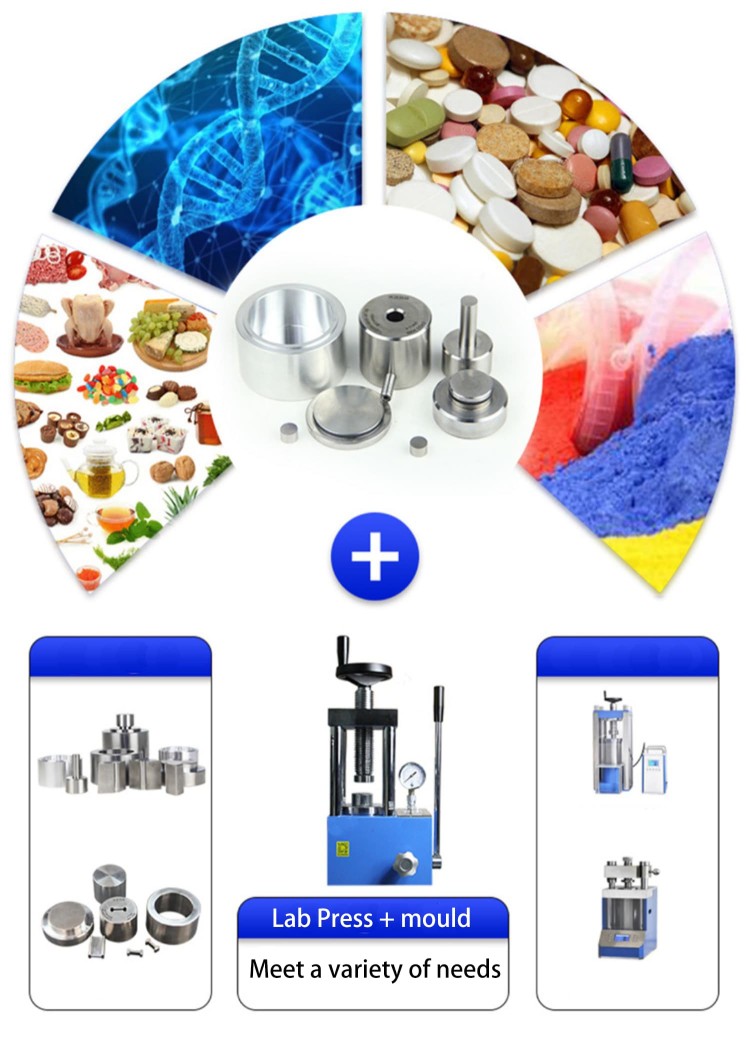
The Right Lab Press Awaits
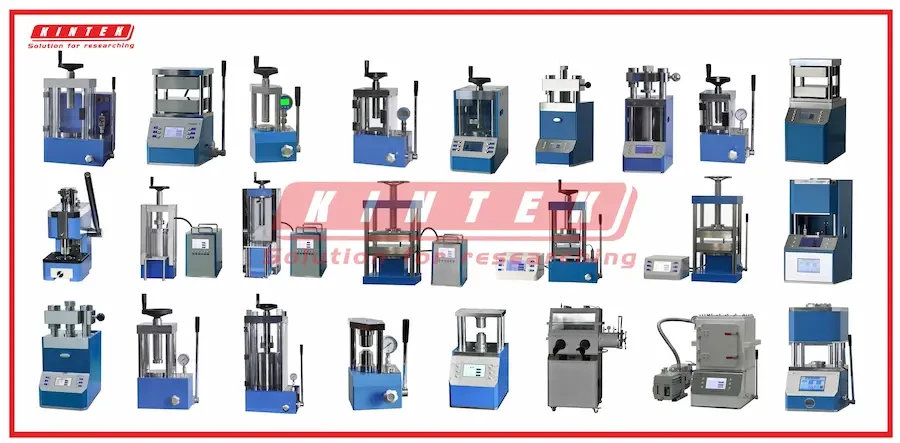
Expert Advice? We're Here. Get in Touch!
FAQ
What Are The Main Applications Of Press Molds In Laboratories?
What Are The Main Applications Of A Laboratory Pellet Press?
What Is A Laboratory Hot Press Machine Used For?
What Types Of Press Molds Are Available For Laboratory Use?
What Features Should I Consider When Choosing A Laboratory Pellet Press?
What Are The Key Features Of A Laboratory Hot Press Machine?
What Are The Key Features Of Laboratory Press Molds?
How Does A Laboratory Pellet Press Work?
What Are The Main Components Of A Laboratory Hot Press Machine?
What Materials Are Commonly Used To Make Press Molds?
What Are The Advantages Of Using A Laboratory Pellet Press?
How Does A Laboratory Hot Press Machine Work?
What Are The Advantages Of Using Press Molds In Laboratories?
What Types Of Laboratory Pellet Presses Are Available?
What Are The Advantages Of Using A Laboratory Hot Press Machine?
Can Press Molds Be Customized For Specific Laboratory Needs?
How Do Press Molds Ensure High-precision Sample Preparation?
What Are The Benefits Of Using Heated Press Molds?
How Do Press Molds Contribute To Efficient Laboratory Workflows?
What Should I Consider When Choosing A Press Mold For My Laboratory?
4.8
out of
5
Incredibly precise and durable—this mold has transformed our lab workflow. Worth every penny!
4.9
out of
5
Fast shipping, flawless quality. The technological edge of this mold is unmatched. Highly recommend!
4.7
out of
5
A game-changer for high-volume labs. Sturdy, efficient, and delivers consistent results every time.
4.8
out of
5
Top-tier craftsmanship. The mold’s precision and longevity make it a standout investment for any lab.
4.9
out of
5
Exceeded expectations! The speed and accuracy of this mold have streamlined our processes beautifully.
4.7
out of
5
Reliable and innovative—this mold is a must-have. Delivered promptly and performs like a dream.
4.8
out of
5
Perfect balance of quality and affordability. The mold’s advanced design ensures flawless press every time.
4.9
out of
5
Exceptional durability and precision. This mold has become an indispensable tool in our lab. Bravo!
REQUEST A QUOTE
Our professional team will reply to you within one business day. Please feel free to contact us!
Related Products
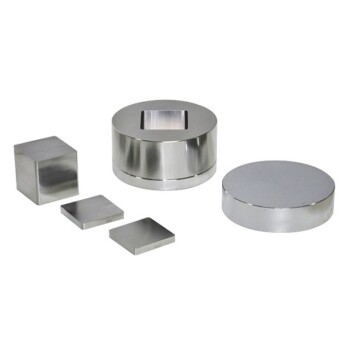
Square Lab Press Mold for Laboratory Use
KINTEK's Square Lab Press Molds create uniform strip samples with precision. Durable Cr12MoV steel, versatile sizes, ideal for lab applications. Enhance your sample prep today!
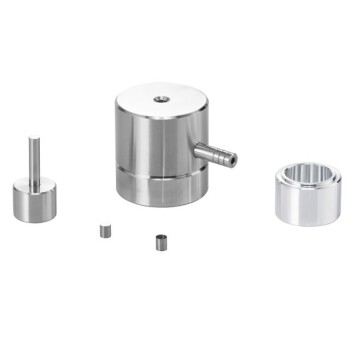
Lab Cylindrical Press Mold for Laboratory Use
Precision cylindrical press molds for lab sample prep. Durable, high-performance, and customizable for XRF, battery research, and material testing. Get yours today!
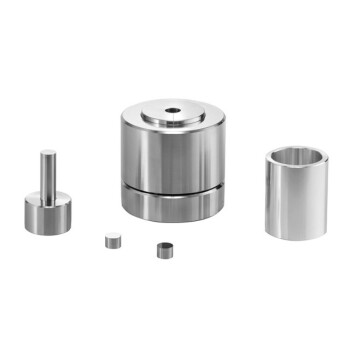
Assemble Lab Cylindrical Press Mold for Laboratory Use
Premium lab cylindrical press mold for flawless sample prep. Prevents delamination, ultra-durable Japanese steel. Custom sizes available. Get yours now!
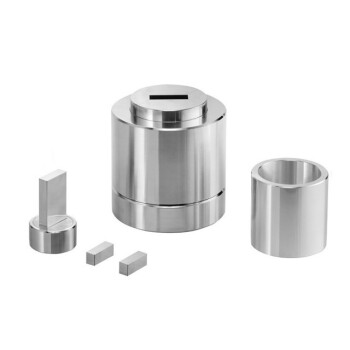
Assemble Square Lab Press Mold for Laboratory Use
KINTEK's Assemble Lab Press Mold ensures precise sample prep for delicate materials, preventing damage with quick-disassembly design. Ideal for thin strips & reliable demolding.
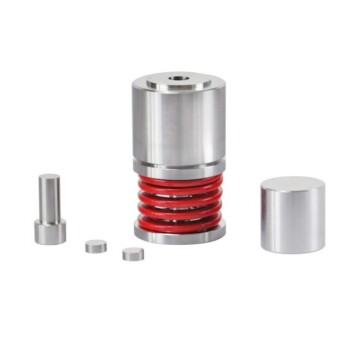
Lab Round Bidirectional Press Mold
Precision Round Bidirectional Press Mold for lab use, high-density compaction, Cr12MoV alloy steel. Ideal for powder metallurgy & ceramics.
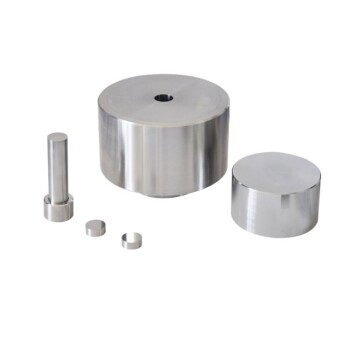
Precision Anti-Cracking Press Mold for lab use. Durable Cr12MoV steel, high-pressure resistant, customizable sizes. Ideal for material testing. Get yours now!
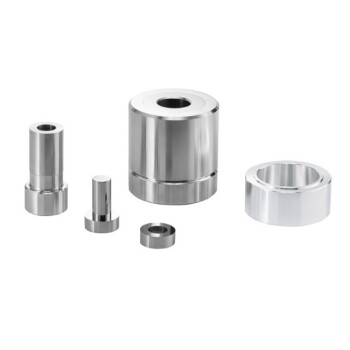
Lab Ring Press Mold for Sample Preparation
High-precision Ring Press Dies for uniform pellets in labs & industry. Durable Cr12MoV alloy, sizes Φ3-80mm. Boost efficiency & accuracy today!
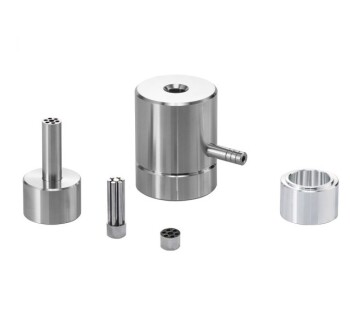
Special Shape Lab Press Mold for Laboratory Applications
Special Shape Press Molds for precise lab applications. Customizable, high-pressure performance, and versatile shapes. Ideal for ceramics, pharmaceuticals, and more. Contact KINTEK today!
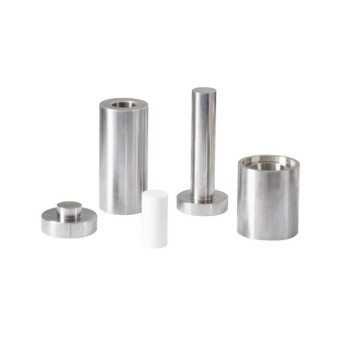
Lab Cylindrical Press Mold with Scale
KINTEK's Cylindrical Press Mold ensures precision material processing with uniform pressure, versatile shapes, and optional heating. Ideal for labs and industries. Get expert advice now!

Laboratory Split Manual Heated Hydraulic Press Machine with Hot Plates
Boost lab efficiency with KINTEK's heated lab presses—precise temperature control, durable design, and rapid cooling for consistent results. Explore now!

Laboratory Manual Heated Hydraulic Press Machine with Hot Plates
KINTEK's Manual Hot Press delivers precise material processing with controlled heat and pressure. Ideal for labs needing reliable bonds and high-quality samples. Contact us today!

Heated Hydraulic Press Machine With Heated Plates For Vacuum Box Laboratory Hot Press
Enhance lab precision with KINTEK's Heated Vacuum Lab Press for uniform, oxidation-free samples. Ideal for sensitive materials. Get expert advice now!
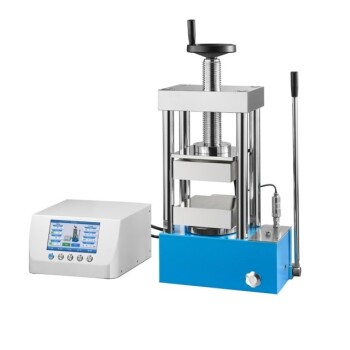
24T 30T 60T Heated Hydraulic Lab Press Machine with Hot Plates for Laboratory
High-quality hydraulic lab presses for precise sample preparation. Choose automatic or heated models for material research, pharmacy, and more. Get a quote now!

Manual Heated Hydraulic Lab Press with Integrated Hot Plates Hydraulic Press Machine
KINTEK's precision lab presses offer efficient, high-temperature sample prep for material research, pharmacy, and ceramics. Explore models now!

Laboratory Hydraulic Press Lab Pellet Press Machine for Glove Box
Precision lab press for glove boxes: Compact, leak-proof design with digital pressure control. Ideal for inert atmosphere material processing. Explore now!

Laboratory Hydraulic Press 2T Lab Pellet Press for KBR FTIR
KINTEK 2T Lab Hydraulic Press for precise FTIR sample prep, durable KBr pellet creation, and versatile material testing. Ideal for research labs.

Laboratory Hydraulic Pellet Press for XRF KBR FTIR Lab Press
KINTEK Lab Press Machines: Precision hydraulic presses for sample prep. Automatic, heated, and isostatic models for research labs. Get expert advice now!

Automatic Laboratory Hydraulic Press Lab Pellet Press Machine
Upgrade your lab with KINTEK's Automatic Lab Press – precision, efficiency, and versatility for superior sample preparation. Explore models now!

Manual Laboratory Hydraulic Press Lab Pellet Press
KINTEK's Protective Manual Lab Hydraulic Press ensures safe, precise sample preparation with durable construction, versatile applications, and advanced safety features. Ideal for labs.
